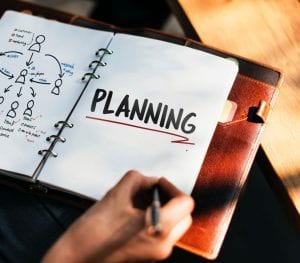What Makes A Good Leader? A question asked at the beginning of term that has ballooned throughout the course. Initially, my understanding was particular qualities possessed by leaders were crucial to being a good leader, however, my own experiences throughout this term, the module content and the case studies have shaped my increased understanding of leadership.
I discussed in my own personal experiences of missing our school principal because of his humour and that was a quality that made him a good leader (Bernard, 2020a), however, my understanding has grown to know that humour in itself is not the quality of great leadership. My principal is missed because he was an inspirational leader who had a strong strategic plan and sense of direction for the school. We were able to function as a family unit because he adopted a flexible transformational leadership style that worked for the voices within his school community. He ensured we were focused on our direction, and that was the improvement of our students. When he left, so did his direction and understanding of leadership.
This course through both content and case studies have developed my understanding of how teacher librarians can be leaders and the skills necessary to fulfil this important role. Module 6 taught me that teacher librarians are in the optimal position to enact change for students, teachers and the wider school community. Teacher librarians support the diverse needs of students and foster an environment that encourages and celebrates innovation, creative thinking and exploration (American Association of School Librarians, 2013). Since teacher librarians are often lone figures within the school community, this provides ample opportunity for collaboration between teachers and students, drawing attention to the goals of the school, providing quality education to all.
Working in Group 7 for the case studies highlighted the importance of communication skills in any leadership team. With dwindling numbers and outside forces playing havoc on the mind, it was hard to stay motivated, however, Nicola provided our group with direction and positive authority (Walmsley, 2020). Case Study 4 (Bernard, 2020b) provided us with an opportunity to apply change management processes through a SWOT analysis of the rapidly changing nature of schools due to COVID and the necessity for leaders to inspire innovative thinking within all members. The case studies encouraged us to think reflectively, a key trait for leaders, on the events unfolding and how to flexibly respond to them.
The case studies highlighted three crucial areas of leadership needed to be successful. Communication is necessary in any group, however, open and active channels of communication need to be utilised. Leaders are fundamental in fostering the environment in which these channels can grow.
Strategically planning is required to achieve any goal. Leaders are able to inspire, delegate and support all individuals to ensure the focus of the goal is at the forefront and the team are working efficiently to reach it.
Collaboration is a fundamental component to strategic planning. Leaders promote environments that encourage collaboration and celebration of team successes to motivate each member.
References
American Association of School Librarians. (2013). Empowering Learners: Guidelines for school library programs. American Association of School Librarians.
Bernard, P. (2020a). What make a good leader [Blog]
https://thinkspace.csu.edu.au/paigespages/2020/03/09/what-makes-a-good-leader/
Bernard, P. (2020b). Case study 4 Forum: Case study 4 Thread: Case study 4, group 7.
Walmsley, N. (2020). Nicola Walmsley – Teacher Librarian [Blog]

